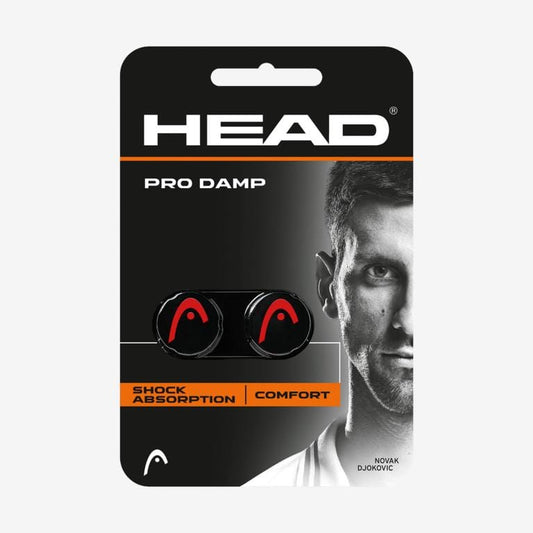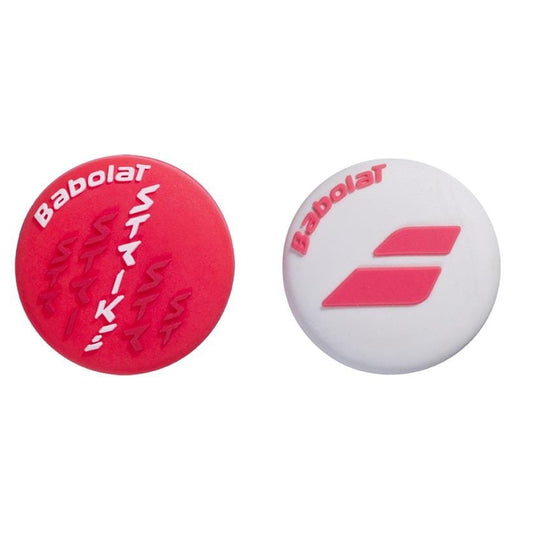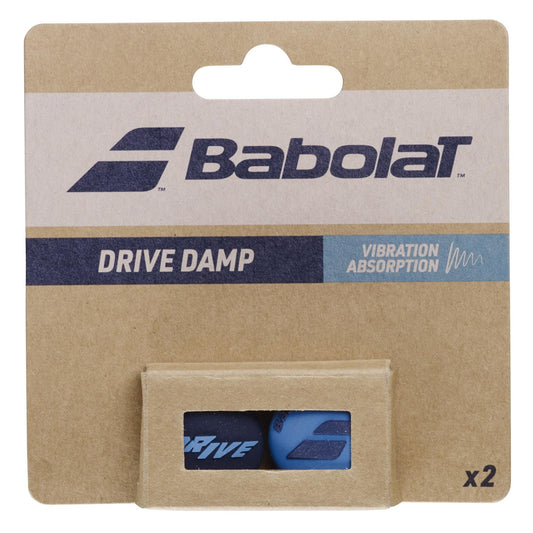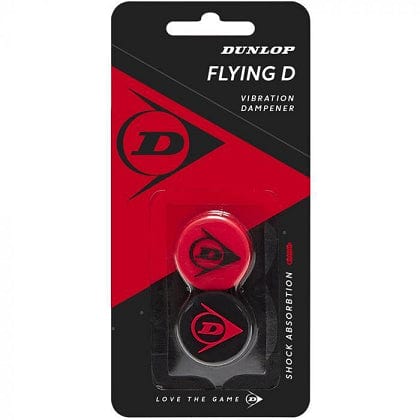Collection: Tennis Racket Dampeners
In the world of tennis, precision and focus are key to achieving success on the court. Every aspect of your game, including the equipment you use, plays a crucial role in maximizing your performance. One such piece of equipment that often goes unnoticed but can have a significant impact is the dampener. In this comprehensive guide, we will delve into the world of tennis dampeners, their purpose, benefits, and provide valuable insights into choosing the right dampener for your game.
What is a tennis dampener?
Tennis dampeners are small, lightweight accessories that are placed on the strings of tennis rackets. The dampener was first introduced into tennis by Rene Lacoste in the 1960s. They are designed to reduce string vibration and dampen the sound produced upon ball impact. While they may seem insignificant, dampeners can have a noticeable effect on your overall playing experience.
What does a tennis dampener do?
Tennis dampeners serve two primary purposes:
- Vibration Reduction: When a tennis ball strikes the strings of a racket, it generates vibrations that can be felt in the handle. These vibrations, if left unchecked, can cause discomfort and potentially affect your control over the racket. Dampeners absorb and dissipate these vibrations, reducing the impact felt in your hand and arm. Whilst it is not a fool proof way to avoid tennis elbow, dampeners may help to relieve the pain. They should not be relied upon and have not been proven to reduce injury in any scientific study.
- Sound Dampening: Dampeners also help reduce the noise produced when the ball makes contact with the strings. The distinctive "ping" sound can be distracting or disruptive, especially in competitive matches. By minimizing the sound, tennis dampeners allow you to focus more on your game and maintain a calm and composed mindset.
Benefits of using tennis dampeners:
- Enhanced Comfort: By reducing string vibrations, tennis dampeners help alleviate the strain on your hand and arm. This can be particularly beneficial for players who suffer from tennis elbow or other repetitive strain injuries. The increased comfort allows you to play for longer periods without experiencing excessive fatigue or discomfort.
- Improved Control: Reduced vibrations contribute to better racket stability, providing you with enhanced control over your shots. With a more stable racket, you can execute precise and accurate strokes, resulting in improved consistency and shot placement.
- Mental Focus: The sound produced by racket strings can be distracting, especially during critical moments in a match. By dampening the sound, dampeners help create a quieter environment, allowing you to maintain better concentration and mental focus on your game.
- Customization: Dampeners come in various shapes, sizes, and materials, allowing you to customize your racket's feel and sound. You can experiment with different dampeners to find the one that suits your preferences and enhances your playing style.
How do I choose a tennis dampener?
- Shape and Size: Dampeners come in different shapes, including square, circular, or novelty designs. The size of the dampener can also vary. Choose a shape and size that fits securely between the strings without interfering with your stroke technique.
- Material: Dampeners are typically made of silicone, rubber, or other synthetic materials. Each material offers a different level of dampening effect and feel. Silicone dampeners are known for their ability to absorb vibrations effectively, while rubber dampeners provide a softer feel. Experiment with different materials to find the one that suits your preferences.
- Installation: Most tennis dampeners are easy to install. Simply slide them between the strings in the desired position, typically in the lower part of the string bed, just above the throat. Ensure a secure fit to prevent the dampener from moving during play.
- Personal Preference: Ultimately, the choice of a dampener is a matter of personal preference. Try out different dampeners to determine which one provides the desired level of vibration reduction and sound dampening for your game.
Do any pros use dampeners?
Roughly 60% of players on the pro tour use vibrations dampeners. Out of the 'big three' tennis legends, Nadal and Djokovic use dampeners, although Federer famously did not. It is said that Federer did originally use a dampener, however one day it fell out, he didn't replace it and just gradually got used to the sound and feel without one.
Final thoughts
In the world of tennis, every detail counts. Dampeners may seem like small accessories, but their impact on your game can be significant. By reducing string vibrations and dampening sound, tennis dampeners enhance your comfort, control, and mental focus on the court. Experiment with different shapes, sizes, and materials to find the tennis dampener that suits your preferences and enhances your playing style. Embrace the power of silence and unleash your true potential with tennis dampeners.
If you are looking to further minimise any impact tennis may have on your joints, then investing in a supportive pair of tennis shoes may also be worth considering. For more information on buying tennis shoes check out our Ultimate Tennis Shoes Buying Guide
At TennisHQ we're always happy to help so if you have any further questions then feel free to contact us over the phone or via email.
-
HEAD Pro Damp Tennis Dampener - Black
Save 10%Regular price £4.95Regular priceUnit price / per£5.50Sale price £4.95Sale -
HEAD Djokovic Tennis Dampener (2 Pack) - White
Save 19%Regular price £4.45Regular priceUnit price / per£5.50Sale price £4.45Sale -
HEAD Pro Damp Tennis Dampener - White
Save 10%Regular price £4.95Regular priceUnit price / per£5.50Sale price £4.95Sale -
 Save 10%
Save 10%HEAD Pro Damp Tennis Dampener - Blue
Save 10%Regular price £4.95Regular priceUnit price / per£5.50Sale price £4.95Sale -
HEAD Pro Damp Tennis Dampener - Yellow
Save 10%Regular price £4.95Regular priceUnit price / per£5.50Sale price £4.95Sale -
Babolat Strike Damp X2 Tennis Dampener - Red / White
Save 11%Regular price £6.70Regular priceUnit price / per£7.49Sale price £6.70Sale -
Babolat Drive Damp X2 Tennis Dampener - Blue
Save 8%Regular price £6.95Regular priceUnit price / per£7.53Sale price £6.95Sale -
HEAD Zverev Tennis Dampener (2 Pack) - Blue / Yellow
Save 10%Regular price £4.95Regular priceUnit price / per£5.50Sale price £4.95Sale -
 Save 10%
Save 10%HEAD Pro Damp Tennis Dampener - Pink
Save 10%Regular price £4.95Regular priceUnit price / per£5.50Sale price £4.95Sale -
Dunlop Flying D Tennis Vibration Dampener - Red / Black
Save 21%Regular price £3.95Regular priceUnit price / per£5.00Sale price £3.95Sale -
HEAD Palm Tree Crew Tennis Dampener - Blue / Pink
Save 10%Regular price £5.40Regular priceUnit price / per£6.00Sale price £5.40Sale -

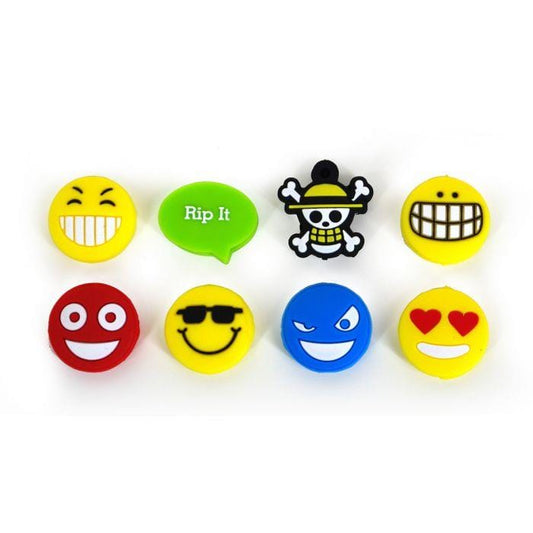 Save 26%
Save 26%Karakal Fun Dampener - Crossbones
Save 26%Regular price £1.45Regular priceUnit price / per£1.95Sale price £1.45Sale -
Volkl Vibra Stop Tennis Vibration Dampener - Yellow
Save 15%Regular price £5.95Regular priceUnit price / per£7.00Sale price £5.95Sale -
Volkl Vibra Stop Tennis Vibration Dampener - Black
Save 15%Regular price £5.95Regular priceUnit price / per£7.00Sale price £5.95Sale -
HEAD Smartsorb Tennis Vibration Dampener - Yellow
Save 34%Regular price £2.95Regular priceUnit price / per£4.50Sale price £2.95Sale -
HEAD Smartsorb Tennis Vibration Dampener - Red
Save 34%Regular price £2.95Regular priceUnit price / per£4.50Sale price £2.95Sale -
HEAD Smartsorb Tennis Vibration Dampener - Blue
Save 34%Regular price £2.95Regular priceUnit price / per£4.50Sale price £2.95Sale -
 Save 20%
Save 20%Babolat Elastocross String Saver
Save 20%Regular price £7.99Regular priceUnit price / per£10.00Sale price £7.99Sale
